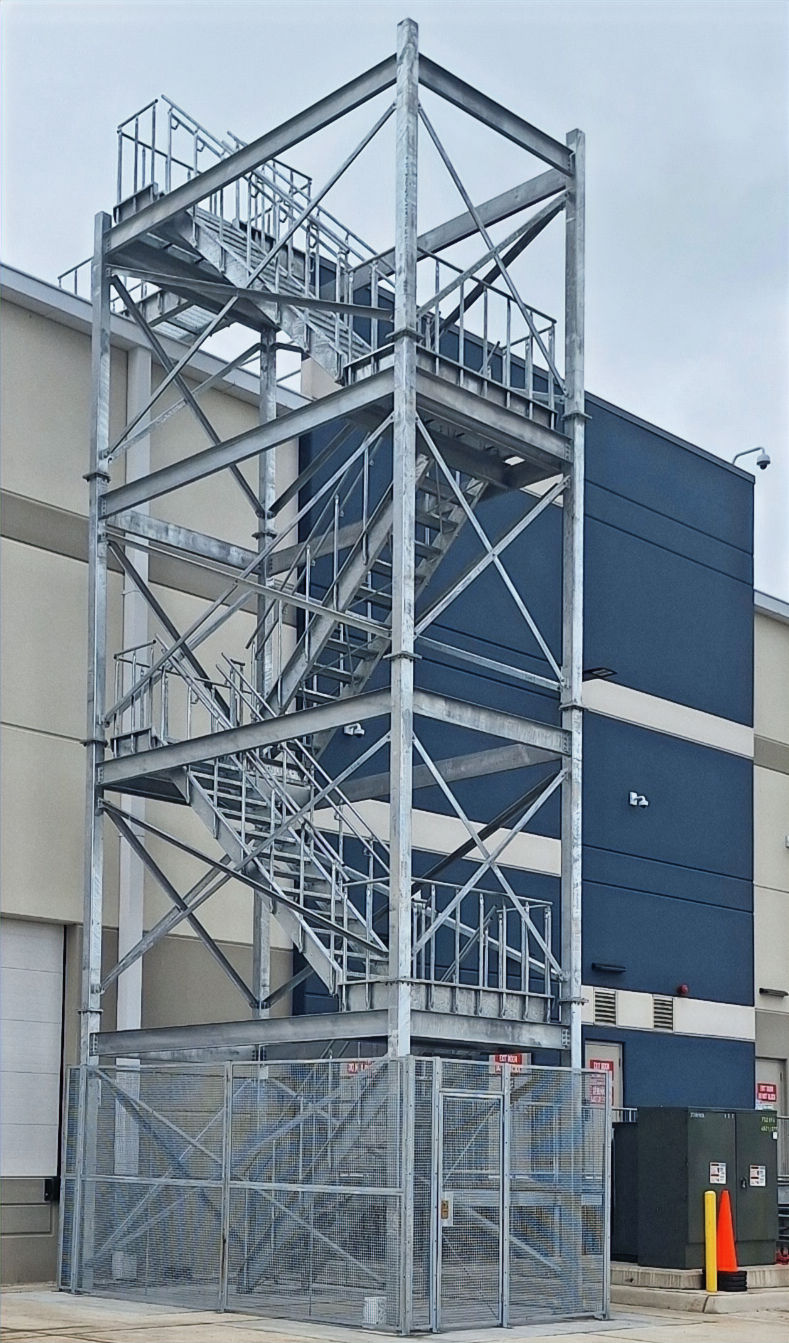Exploring the Versatility of Stair Towers in Modern Architecture and Industry
- CI Group

- Sep 18
- 3 min read

A stair tower is a vertical structure that houses stairs, providing access between different levels of a building or site. Historically, stair towers were often hidden within thick walls or incorporated into castles and fortresses for defense. Over time, they became more prominent and decorative, sometimes even serving as symbols of prestige.
While modern building designs and elevator systems have reduced the need for stair towers in many settings, they continue to play important roles across a variety of industries and applications. Let’s explore the many ways stair towers are used today.
1. Industrial and Construction Sites
In industrial facilities and on construction sites, stair towers are essential for reaching elevated platforms, equipment, and rooftop areas. Many of these towers are free-standing, modular systems designed to be installed where buildings cannot support the weight of a permanent stair structure.
These towers are built to endure demanding conditions—heavy traffic, harsh weather, and rugged environments. Safety is a top priority, so they often feature non-slip treads, sturdy handrails, and guardrails to prevent falls. By providing safe and efficient access to elevated workspaces, stair towers help improve productivity while protecting workers.
2. Safety and Emergency Egress
Stair towers are also critical for building safety. In emergencies such as fires, earthquakes, or power outages, they serve as designated escape routes, ensuring occupants can evacuate quickly and safely.
Building codes set strict requirements for stair tower dimensions, materials, and accessibility to support rapid evacuation. Many are equipped with emergency lighting, clear signage, and fire-resistant materials to improve visibility and safety when it matters most.
3. Vertical Access in Commercial Buildings
In commercial spaces—office complexes, retail centers, and hotels—stair towers offer an alternative to elevators and escalators, providing a reliable way for people to move between floors.
Beyond functionality, commercial stair towers are often designed to enhance the look and feel of the space. Wide steps, comfortable handrails, and sleek finishes can transform a simple staircase into an architectural feature that complements the building’s design.
4. Residential Applications
In apartment buildings and multi-level homes, stair towers serve both practical and aesthetic purposes. They connect different floors while often becoming focal points of the architectural design.
Residential stair towers range from traditional straight-run stairs to modern spiral and helical designs, sometimes even incorporating built-in storage or decorative alcoves to make the most of the space.
5. Public Spaces and Landmarks
Stair towers are also found in parks, observation decks, lighthouses, and bell towers, offering visitors access to panoramic views. These towers must handle high foot traffic while maintaining safety and accessibility for all visitors.
Whether climbing to the top of a historic landmark or enjoying views from a public overlook, stair towers turn simple vertical access into a memorable experience.
6. Temporary and Event Structures
At festivals, concerts, and outdoor events, temporary stair towers provide access to stages, viewing platforms, and elevated seating.
These modular towers are designed for quick setup, teardown, and transport, making them ideal for venues where flexibility and mobility are essential. They help organizers manage large crowds while ensuring safety and accessibility.
Conclusion
From industrial sites to architectural landmarks, stair towers remain a versatile and essential solution for vertical access, safety, and design. They support everything from workplace productivity to emergency preparedness while often adding visual appeal to the structures they serve. Whether permanent or temporary, functional or decorative, stair towers continue to prove their value in modern construction and design.



Comments